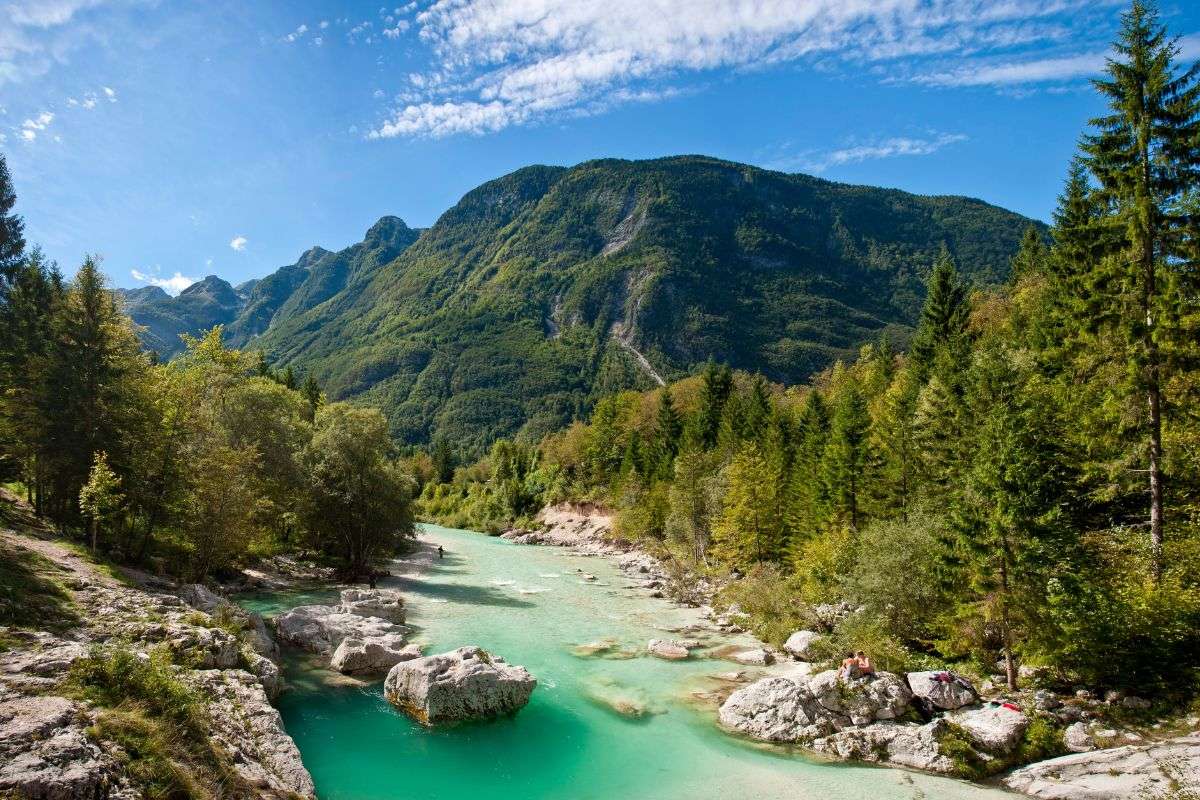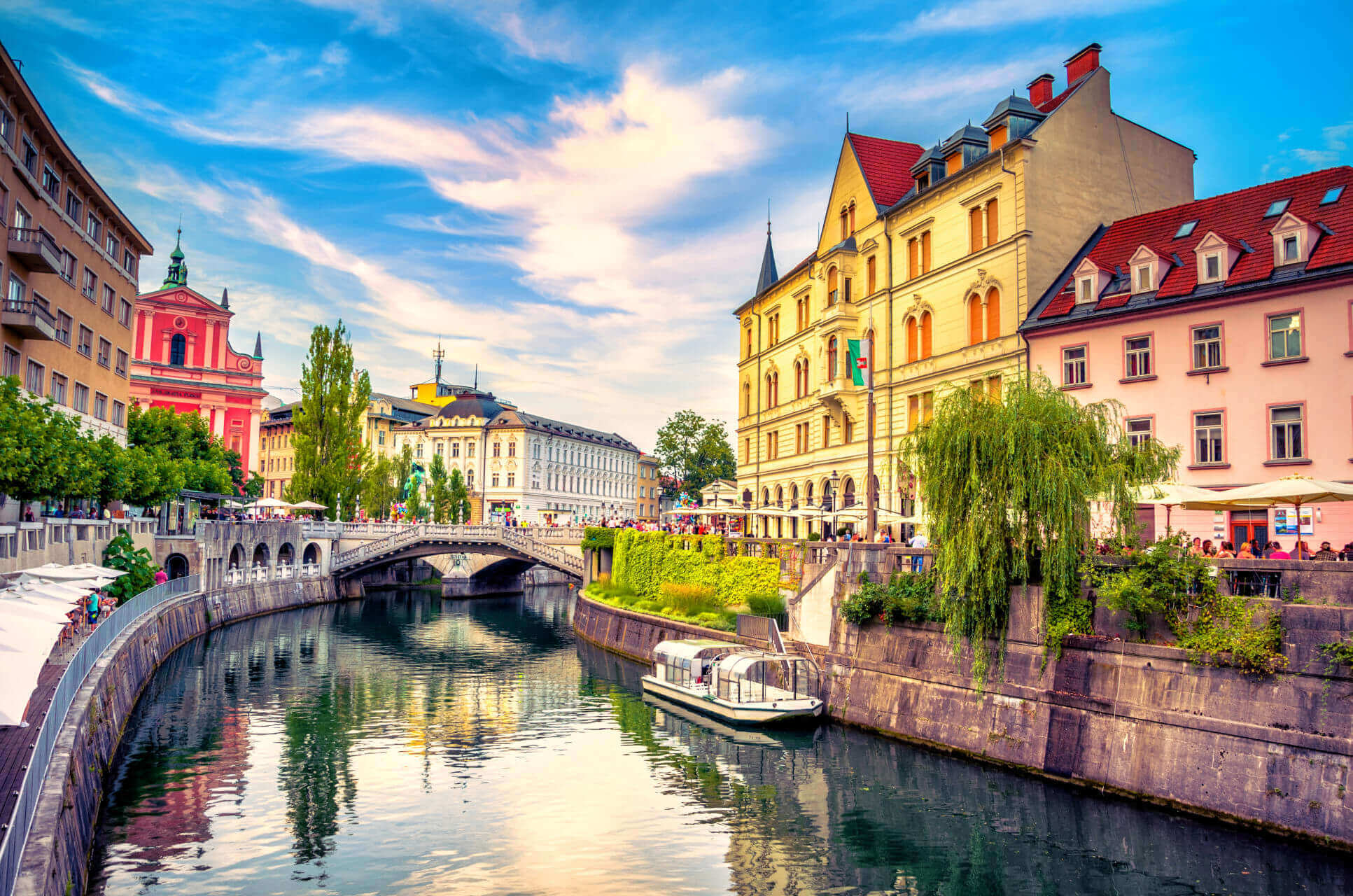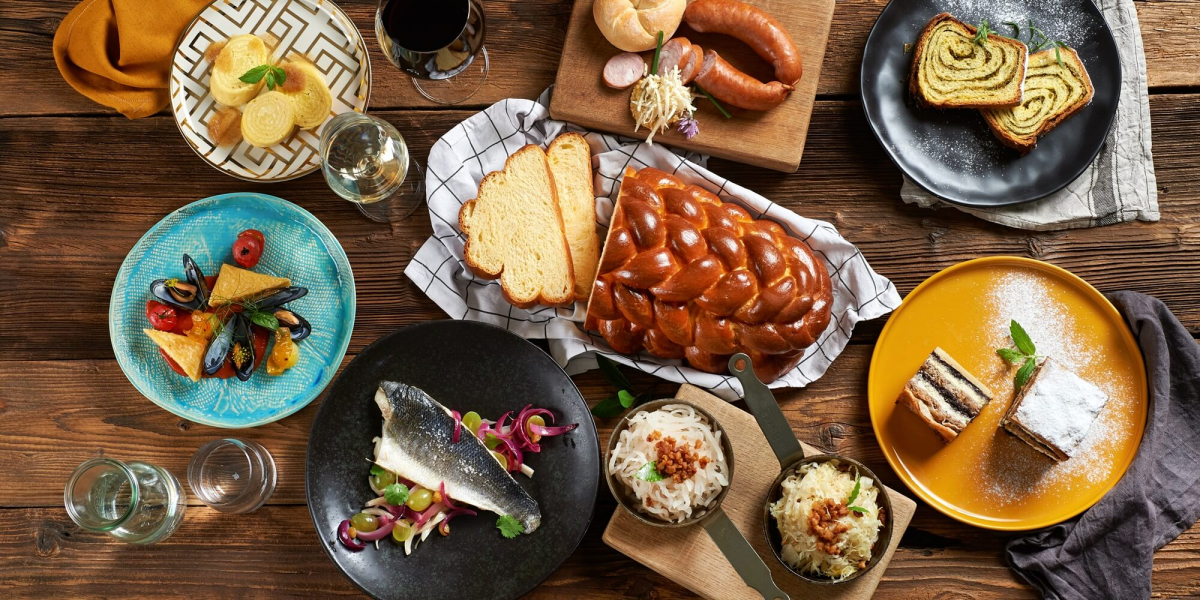Slovenia: A Jewel of Central Europe
 Nestled in the heart of Central Europe lies a gem often overlooked by travelers: Slovenia. Despite its relatively small size, Slovenia boasts an abundance of natural beauty, rich history, and vibrant culture that captivates visitors from around the world. From its picturesque landscapes to its charming cities, Slovenia offers a diverse range of experiences that appeal to outdoor enthusiasts, history buffs, and food lovers alike. In this essay, we will explore the enchanting allure of Slovenia, delving into its captivating landscapes, cultural heritage, and culinary delights.
Nestled in the heart of Central Europe lies a gem often overlooked by travelers: Slovenia. Despite its relatively small size, Slovenia boasts an abundance of natural beauty, rich history, and vibrant culture that captivates visitors from around the world. From its picturesque landscapes to its charming cities, Slovenia offers a diverse range of experiences that appeal to outdoor enthusiasts, history buffs, and food lovers alike. In this essay, we will explore the enchanting allure of Slovenia, delving into its captivating landscapes, cultural heritage, and culinary delights.
Geography and Landscape
Slovenia's geographical diversity is truly remarkable, earning it the nickname "Europe in Miniature." Despite covering an area of just over 20,000 square kilometers, Slovenia is home to a stunning array of landscapes, including mountains, lakes, forests, and coastline. The Julian Alps dominate the country's northwest region, offering spectacular opportunities for hiking, skiing, and mountaineering. Triglav National Park, named after Slovenia's highest peak, Mount Triglav, is a haven for outdoor enthusiasts, boasting pristine wilderness, crystal-clear lakes, and rugged peaks.
In addition to its alpine beauty, Slovenia is dotted with charming towns and villages that exude old-world charm. The capital city, Ljubljana, is a vibrant metropolis renowned for its picturesque riverfront, medieval castle, and lively cafe culture. Just a short drive from Ljubljana lies Lake Bled, perhaps Slovenia's most iconic attraction. This enchanting alpine lake is adorned with a fairytale-like island crowned by a church, creating a scene straight out of a postcard.
Venturing south, the landscape transitions into rolling hills and vineyards, earning the region of Primorska fame for its wine production. The Karst region, renowned for its distinctive limestone terrain, is home to fascinating geological phenomena such as the Škocjan Caves, a UNESCO World Heritage Site. Finally, Slovenia's short but stunning coastline along the Adriatic Sea offers idyllic beaches, historic towns, and delectable seafood.
History and Culture Slovenia's rich history is a testament to its position at the crossroads of European civilizations. Over the centuries, the region has been inhabited by various tribes, including the Illyrians, Celts, and Romans. In the Middle Ages, Slovenia was part of the powerful Holy Roman Empire, and later, the Habsburg Monarchy. This tumultuous past is reflected in Slovenia's architectural heritage, with medieval castles, Roman ruins, and Baroque churches scattered throughout the countryside.
Slovenia's rich history is a testament to its position at the crossroads of European civilizations. Over the centuries, the region has been inhabited by various tribes, including the Illyrians, Celts, and Romans. In the Middle Ages, Slovenia was part of the powerful Holy Roman Empire, and later, the Habsburg Monarchy. This tumultuous past is reflected in Slovenia's architectural heritage, with medieval castles, Roman ruins, and Baroque churches scattered throughout the countryside.
One of Slovenia's most enduring cultural traditions is its folk music and dance, which remain integral to local celebrations and festivals. The country's diverse ethnic makeup, influenced by its proximity to Italy, Austria, and Hungary, has contributed to a rich tapestry of culinary delights. Traditional Slovenian cuisine emphasizes fresh, locally sourced ingredients, with dishes such as potica (nut roll), štruklji (dumplings), and jota (bean soup) delighting the taste buds of visitors and locals alike.
Slovenia's modern identity as an independent nation emerged in the aftermath of the breakup of Yugoslavia in the early 1990s. Since gaining independence in 1991, Slovenia has undergone rapid development and embraced its European heritage while preserving its unique cultural identity. Today, Slovenia is known for its high standard of living, efficient infrastructure, and commitment to environmental sustainability.
Tourism and Sustainable Development In recent years, Slovenia has emerged as a popular tourist destination, attracting visitors with its pristine nature, rich history, and warm hospitality. The country's tourism industry has experienced steady growth, with an increasing number of travelers seeking authentic experiences and sustainable travel options. Slovenia's commitment to eco-tourism and responsible travel has earned it praise from environmental organizations and travelers alike.
In recent years, Slovenia has emerged as a popular tourist destination, attracting visitors with its pristine nature, rich history, and warm hospitality. The country's tourism industry has experienced steady growth, with an increasing number of travelers seeking authentic experiences and sustainable travel options. Slovenia's commitment to eco-tourism and responsible travel has earned it praise from environmental organizations and travelers alike.
One notable example of Slovenia's dedication to sustainability is the Green Scheme of Slovenian Tourism, a national certification program that promotes environmentally friendly practices among tourism providers. From eco-friendly accommodations to organic farms and green transportation options, Slovenia offers a range of sustainable travel experiences for conscientious travelers.
In addition to its natural beauty, Slovenia also boasts a thriving cultural scene, with museums, galleries, and performing arts venues showcasing the country's rich artistic heritage. The annual Ljubljana Festival, held during the summer months, features a diverse lineup of concerts, theater productions, and dance performances, attracting artists and audiences from around the world.
Challenges and Opportunities Despite its many strengths, Slovenia faces several challenges as it seeks to balance tourism development with environmental conservation and cultural preservation. The rapid growth of tourism in popular destinations such as Lake Bled has raised concerns about overcrowding, environmental degradation, and the erosion of local traditions. Sustainable management strategies, including visitor caps, infrastructure improvements, and community engagement initiatives, are essential to ensure that Slovenia's natural and cultural treasures are protected for future generations.
Despite its many strengths, Slovenia faces several challenges as it seeks to balance tourism development with environmental conservation and cultural preservation. The rapid growth of tourism in popular destinations such as Lake Bled has raised concerns about overcrowding, environmental degradation, and the erosion of local traditions. Sustainable management strategies, including visitor caps, infrastructure improvements, and community engagement initiatives, are essential to ensure that Slovenia's natural and cultural treasures are protected for future generations.
Furthermore, Slovenia's tourism industry has been heavily impacted by global events such as the COVID-19 pandemic, highlighting the need for resilience and adaptability in the face of external shocks. As the world emerges from the pandemic, Slovenia has an opportunity to reposition itself as a safe, sustainable, and resilient destination, attracting travelers who prioritize health, safety, and sustainability.
Slovenian Gastronomy: A Culinary Journey Slovenian cuisine is a reflection of the country's diverse cultural influences, varied geography, and seasonal availability of ingredients. Traditional Slovenian dishes are hearty, flavorful, and made from locally sourced ingredients, often showcasing the country's agricultural bounty. From hearty stews to delicate pastries, Slovenian gastronomy offers a culinary journey that delights the senses and nourishes the soul.
Slovenian cuisine is a reflection of the country's diverse cultural influences, varied geography, and seasonal availability of ingredients. Traditional Slovenian dishes are hearty, flavorful, and made from locally sourced ingredients, often showcasing the country's agricultural bounty. From hearty stews to delicate pastries, Slovenian gastronomy offers a culinary journey that delights the senses and nourishes the soul.
1. Potica
Potica is perhaps Slovenia's most famous culinary export, a sweet nut roll that holds a special place in the hearts of Slovenians. This traditional dessert consists of a light, yeasted dough rolled thin and filled with a rich mixture of ground nuts, sugar, butter, and spices, such as cinnamon and vanilla. Variations of potica abound, with fillings ranging from walnuts and hazelnuts to poppy seeds and cottage cheese. Often served during holidays and special occasions, potica is cherished for its irresistible aroma and melt-in-your-mouth texture.
2. Štruklji
Štruklji are another beloved Slovenian specialty, versatile dumplings that can be either sweet or savory, boiled or baked. Made from a simple dough of flour, water, eggs, and salt, štruklji can be filled with a variety of ingredients, including cottage cheese, fruit, herbs, or meat. Savory štruklji are typically served as a side dish or main course, while sweet štruklji make a delectable dessert or snack. Whichever way they're prepared, štruklji are a comforting and satisfying treat that embodies the essence of Slovenian home cooking.
3. Carniolan Sausage
Carniolan sausage, or kranjska klobasa, holds a special place in Slovenian culinary heritage, recognized as a traditional dish with protected geographical indication status. This hearty sausage is made from a blend of high-quality pork, bacon, and mild spices, encased in natural casing and smoked to perfection. Carniolan sausage is typically served grilled or boiled, accompanied by sauerkraut, mustard, and fresh bread. With its robust flavor and satisfying texture, Carniolan sausage is a staple of Slovenian cuisine, enjoyed year-round at festivals, picnics, and family gatherings.
4. Prekmurska Gibanica
Prekmurska gibanica is a decadent layered cake that hails from the Prekmurje region in northeastern Slovenia. This indulgent dessert features alternating layers of flaky pastry, poppy seed filling, walnut filling, cottage cheese filling, and apple filling, all bound together with a sweetened egg mixture. The result is a harmonious blend of textures and flavors, with each bite offering a tantalizing contrast of sweetness, nuttiness, and creaminess. Prekmurska gibanica is often enjoyed during festive occasions, weddings, and holidays, symbolizing the rich culinary heritage of the Prekmurje region.
5. Jota Jota is a hearty bean soup that reflects Slovenia's agricultural roots and reliance on simple, nourishing ingredients. This rustic dish is made from dried beans, potatoes, sauerkraut, onions, garlic, and smoked pork, simmered together until thick and flavorful. Jota is a comforting and nutritious meal, perfect for warming up on cold winter days or fueling outdoor adventures in the Slovenian countryside. Served piping hot with a slice of crusty bread, jota embodies the essence of Slovenian peasant cuisine, hearty, wholesome, and full of flavor.
Jota is a hearty bean soup that reflects Slovenia's agricultural roots and reliance on simple, nourishing ingredients. This rustic dish is made from dried beans, potatoes, sauerkraut, onions, garlic, and smoked pork, simmered together until thick and flavorful. Jota is a comforting and nutritious meal, perfect for warming up on cold winter days or fueling outdoor adventures in the Slovenian countryside. Served piping hot with a slice of crusty bread, jota embodies the essence of Slovenian peasant cuisine, hearty, wholesome, and full of flavor.
Conclusion
Slovenian gastronomy is a celebration of tradition, innovation, and the rich tapestry of flavors that define the country's culinary identity. From the iconic potica to the savory Carniolan sausage, Slovenian cuisine reflects the diverse cultural influences and regional specialties that have shaped the nation's culinary heritage. Whether enjoyed in a cozy countryside inn or a bustling city cafe, Slovenian dishes delight the senses and nourish the soul, inviting travelers on a culinary journey they won't soon forget.




























![[LIVE] Engage2Earn: Save our PBS from Trump](https://cdn.bulbapp.io/frontend/images/c23a1a05-c831-4c66-a1d1-96b700ef0450/1)




























